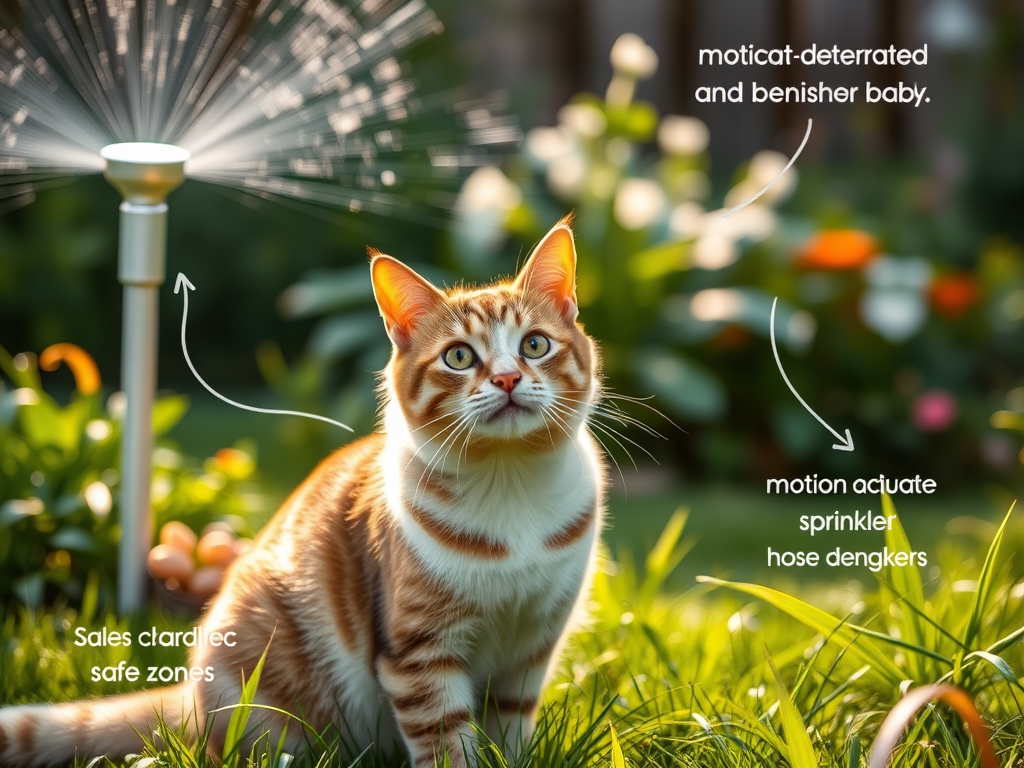Effective Strategies to Reduce Your Cat's Hunting Behavior
Reducing Your Cat's Impact on Wildlife: Cats are inherently driven by their instinct to hunt, a behavior that stems from their evolutionary history. Yet, you can cultivate a secure indoor space that not only respects their natural instincts but also shields local wildlife from potential harm. By crafting enriching environments that stimulate their senses, you can ensure your beloved feline remains engaged and happy, all while minimizing the risk to unsuspecting creatures outside your home.
Incorporating interactive toys into your cat's playtime can greatly elevate their indoor hunting experience. Think about utilizing feather wands, laser pointers, and motorized mice that are designed to hold your cat's attention for longer periods. These engaging toys replicate natural hunting scenarios, allowing your cat to practice their tracking and pouncing skills, which are vital for their mental health and physical fitness. Not only do these toys keep your cat entertained, but they also play a crucial role in fostering overall well-being by helping them channel their energy constructively.
Transform your living space into an exhilarating feline playground by designing obstacle courses filled with intriguing boxes, tunnels, and elevated shelves. This imaginative mini-jungle gym encourages your cat to explore, climb, and engage in physical activity, simulating the dynamic environments they would encounter in the wild. Cats are naturally curious, and by offering them a range of stimulating areas to investigate, you can recreate the thrill of a safari right in your home.
Never underestimate the benefits of puzzle feeders. These innovative devices challenge your cat mentally while mimicking the effort required during hunting. By integrating treat-dispensing puzzles into your cat's daily routine, you promote cognitive engagement while providing a fun and rewarding experience. This technique entertains your pet while encouraging healthy eating habits, as they learn to work for their treats, which can significantly enhance their quality of life.
Prioritize playtime as a vital aspect of your cat's daily routine. Engaging in social interaction through play is essential for fortifying the bond between you and your feline companion. Make it a point to set aside dedicated play sessions, utilizing the same toys that capture their interest during solitary play. This shared activity not only alleviates pent-up energy and frustration in your cat but also deepens your connection, making playtime a rewarding experience for both of you.
Creating a vibrant indoor environment for your cat is not only achievable but can also be incredibly rewarding. Your home can evolve from just a shelter into an adventurous landscape that satisfies their natural hunting instincts while safeguarding them from outdoor dangers. With thoughtful design and proactive engagement, you can cultivate a joyful and fulfilled indoor life for your cat.

Leash Training: A Gateway to New Outdoor Adventures for Your Cat
Embracing leash training can unlock a realm of safe outdoor exploration for your cat. While walks are typically associated with dogs, cats can equally enjoy the great outdoors with the right training and a patient approach. By introducing your feline friend to a harness and leash, you afford them the chance to experience nature firsthand, all while ensuring their security and safety.
Start your leash training journey with a well-fitted harness that prioritizes comfort for your cat. Allow your pet to familiarize themselves with the harness before attempting to put it on. Let them sniff and investigate the harness, which will help alleviate any anxiety they may have. Gradually introducing the harness at their own pace fosters positive associations and smoothens the process, making it a stress-free experience for both you and your cat.
Once your cat has acclimated to the harness, attach a lightweight leash and practice indoors. This familiar setting will help them adjust to the sensation of wearing a leash and build their confidence in this new experience. Take your time, and be prepared for some initial resistance; patience is essential to help your cat navigate this exciting yet unfamiliar territory.
When you venture outside for the first time, select a calm and secure area, such as your backyard or a tranquil park. Ensure that the location has minimal traffic and distractions to make your cat feel comfortable. Begin with short outdoor sessions to prevent overwhelming your pet, gradually extending the duration of these excursions as they grow more accustomed to their surroundings.
Supervised outdoor time enriches your cat's life, allowing them to relish the sights, sounds, and scents of nature while ensuring local wildlife remains unharmed. Imagine the delight on your cat's face as they encounter new experiences within a safe environment. This bonding time not only enhances their quality of life but also strengthens your relationship, creating cherished memories.
Real-life accounts from fellow cat owners can serve as an inspiration. Many have shared their initial concerns about whether their cats would embrace leash walking, yet through consistency and positive reinforcement, they witnessed remarkable transformations. Celebrate each small success as a milestone in expanding your cat's horizons while ensuring their safety in the process.
Incorporating leash training into your cat's daily routine facilitates a harmonious blend of outdoor enjoyment and wildlife protection. This balanced approach allows your cat to explore while fostering a sense of security in their surroundings, ultimately enriching their lives.
The Advantages of Catios: Creating Safe Outdoor Spaces for Your Feline Friend
Outdoor cat enclosures, commonly known as catios, offer a perfect solution for cats eager for outdoor experiences without the accompanying risks. These secure spaces allow your feline companions to bask in the beauty of the outdoors while ensuring their safety and the preservation of local wildlife.
Whether you decide to build or purchase a catio, you can customize it to fit your available space and budget. Options vary from simple balcony enclosures to more elaborate backyard constructions. The primary focus should be to ensure the structure is escape-proof, as safety is crucial in providing a protected environment for your cat.
When designing your catio, consider incorporating multiple levels and cozy hiding spots. Cats thrive in environments that offer vertical spaces and areas to retreat. By adding platforms, ramps, and hammocks, you can transform a basic enclosure into a stimulating paradise that mirrors their natural habitat, enhancing their comfort and happiness.
To enrich the sensory experience within the catio, consider introducing elements like cat grass, scratching posts, or logs. These additions create a multi-textured environment filled with enticing scents, keeping your cat engaged and satisfied while allowing them to relish the joys of the outdoors in a controlled setting.
Regular maintenance is vital for ensuring the ongoing safety of your catio. Routinely check for any signs of wear and tear, including the integrity of the mesh, the overall structure, and the locks. Cats are naturally curious and may test the limits of their enclosure, making it essential to keep everything in optimal condition for their safety and well-being.
With a well-constructed catio, your feline friend can enjoy sunbathing, climbing, and observing wildlife without posing a threat to local ecosystems. They can watch birds and bask in the sun from the safety of their outdoor retreat, remaining content while wildlife enjoys protection from potential harm.

Proven Behavioral Training Techniques to Diminish Hunting Instincts
Teaching your cat to minimize their hunting behaviors may appear daunting, yet with the right techniques, it is entirely achievable. The initial step involves understanding their natural instincts and the behaviors that drive them to hunt, which is crucial for implementing effective training strategies.
Utilizing modern technology can significantly support your training efforts. Consider using motion-activated deterrents, such as sprinklers or noise-makers, to create boundaries that discourage hunting behaviors without disrupting other activities. Strategically zoning your yard into safe areas can help redirect your cat’s attention away from potential prey, making the environment safer for both your pet and local wildlife.
Positive reinforcement plays a vital role in modifying your cat’s behavior. Reward them for non-hunting actions with treats or affection. For example, if your cat responds to your call or refrains from chasing a potential target, offer them a delightful treat or extra affection. This method encourages them to repeat desirable behaviors while diminishing their instinctive urge to hunt.
Incorporating clicker training can also serve as an effective tool. This technique involves associating a distinct sound with positive actions, enabling your cat to forge connections between their behavior and rewards. By clicking when they exhibit desirable actions, you can reinforce good habits and clarify your expectations, making the training process more effective.
For tailored advice and insights, consider consulting with feline behavior specialists. They can provide personalized strategies that address specific challenges, facilitating a harmonious coexistence between you and your cat while respecting local wildlife and ecosystems.
The aim of deterrents and training is not punishment but guidance, helping your cat adopt behaviors that prioritize their safety and environmental harmony. With consistency and patience, you can successfully redirect their instincts, making outdoor interactions safer for both your cat and the local wildlife.
Strategic Feeding Practices to Reduce Hunting Drives in Cats
The type of food you choose and the feeding methods you adopt can greatly affect your cat's hunting instincts. Interestingly, a well-fed cat may still exhibit hunting behaviors; however, how you feed them can help mitigate this urge.
Free feeding, where food is available throughout the day, might not be suitable for every cat. Instead, consider implementing a structured feeding schedule. By establishing predictable mealtimes, your cat may be less inclined to hunt, as they learn to associate food with specific times of day, reducing the instinct to seek out prey.
Interactive feeding strategies can revolutionize your cat's behavior. Utilizing food puzzles or dispensers can replicate the hunting experience, requiring your cat to ‘work' for their meals. This not only keeps them mentally and physically stimulated but also channels their energy positively, allowing their natural instincts to be expressed safely.
Additionally, pay attention to the nutritional content of their food. A diet high in protein and low in carbohydrates aligns better with a cat's natural dietary needs, potentially leading to a decrease in hunting behaviors. Collaborating with your veterinarian to tailor your cat's diet can help ensure their nutritional requirements are effectively met and promote overall health.
Lastly, offering a variety of food types can satisfy their inherent curiosity and appetite for novelty. Alternating between dry kibble, wet food, and raw diets can make mealtime more exciting, reducing the likelihood of them seeking thrills outside their food dish.
Feeding strategies are not just about providing sustenance; they serve as a powerful tool for managing your cat's behavior. By adjusting how and what you feed them, you can effectively diminish their inclination to hunt while keeping them satisfied and healthy.

Fostering Community Responsibility in Cat Conservation
Cats are wonderful companions, and as their guardians, we bear the responsibility of ensuring they coexist peacefully with local wildlife. By embracing both community initiatives and personal accountability, we can significantly reduce the ecological impact of free-roaming cats.
Engaging with local conservation groups is an excellent way to stay informed about wildlife-friendly practices. Many communities offer educational workshops for cat owners, highlighting the ecological consequences of allowing cats to roam freely and providing solutions to mitigate these effects.
Consider initiating or participating in neighborhood discussions or social media groups focused on responsible pet ownership. Sharing resources, tips, and personal experiences can cultivate a more wildlife-conscious community, creating a supportive environment for all pet owners.
One proactive approach involves establishing cat-friendly zones within communal gardens or parks. These designated areas can include enclosures or supervised play spaces, ensuring a safe environment for both cats and wildlife. This collaborative effort enhances awareness and fosters positive interactions between pets and nature.
Incorporating family-friendly initiatives, such as sticker campaigns or educational contests for children and teens, can elevate awareness regarding responsible pet ownership and the importance of living harmoniously with nature.
Lead by example at home by implementing the strategies you’ve learned. Whether it’s leash training, constructing catios, or modifying feeding practices, showcasing your commitment to a harmonious relationship between your cat and the environment can inspire others to follow suit.
By blending individual actions with community-driven initiatives, we can create a supportive network that harmonizes our cats’ needs with ecological stewardship. Together, we can cherish our pets while protecting the wild spaces around us.
The Article: Minimize Your Cat’s Hunting Impact Appeared First On Unity Pets.
The Article Minimize Hunting Impact of Your Cat Effectively Was Found On https://limitsofstrategy.com

